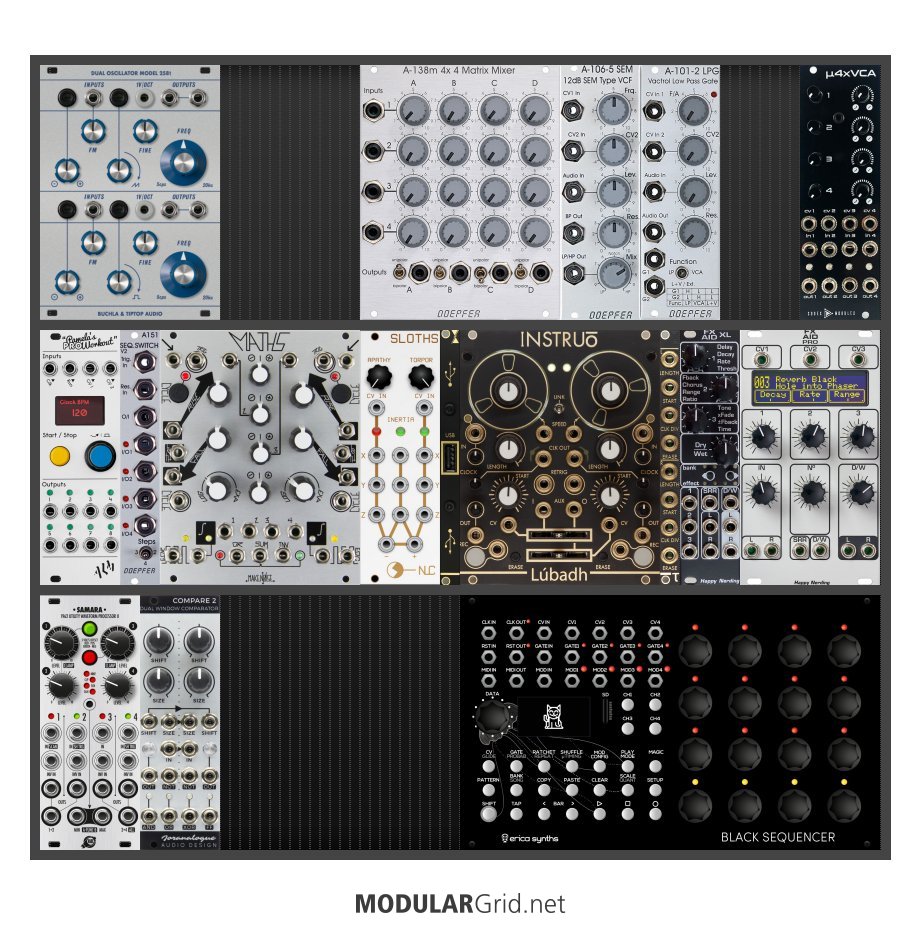many of the modules in this system are currently unobtainium, so I will definitely have to wait. Still, it would be great to read opinions on specific concerns for the rack I've outlined.
this is almost always the case... most modular manufacturers are very small companies (often 1-4 staff in total) and as such really only do small(ish) runs of modules and then do another run once those are sold, which can mean that components are unavailable and modules need redesigning between runs - and that's not taking into account the ongoing disturbance in the electrical component supply chain - caused by the pandemic
- VCAs, Attenuverters & Mixing. I know you can never have enough VCAs, but does it seem like I have an appropriate amount for this rack? How about attenuverters and channels for mixing?
vcas - probably enough, maybe too many - depends how you use them... audio only or also for modulating modulation (this is a good idea!)
attenuverters - again depends how you use them, stacking attenuators and attenuverters can help give very fine control to modulation - again this can be a very good idea
mixing - well I wouldn't be happy with it... there's not a lot other than the vcas and the quadratt for mixing - you have multi channel modules - akemie's, er-301, surface, nautilus - which would almost definitely benefit from stereo channels and mono modules that would almost definitely benefit from panning into a stereo space in order to mix with the stereo modules - do you have an external mixer???? and then there's no provision for mixing modulation sources - I really like a matrix mixer for this
I'd put some more effort into thinking about how you are actually going to mix both audio and modulation, if I were you
- Akemie's Castle. This module is so large, but every time I consider something else, I keep coming back to how good the Castle sounds. The only other oscillator I have seriously considered as a replacement is Akemie's Taiko. The smaller footprint is nice, but it seems much more limited compared to the Castle. I am more interested in the chords and melodic sounds the Castle can make rather than drum sounds. Also, I included a fair amount of modulation in this rack in part to feed the Castle. With this in mind, would anyone recommend Taiko plus 20hp worth of other modules over Akemie's Castle?
maybe the real problem is not that the module is too large, but that the case is too small or there are just too many modules in it - trying to do too much in too small a space...
please take a look at my signature and spend some time thinking about it... it's basically a 1 line guide to building the most versatile modular synthesizer for the least cash - & it scales well up to very large systems - you don't have to take
I'd remove half the sound sources and try to replan from there - and only buy a minimum viable synth to start and add to it slowly
- Ornament & Crime. I want to proceed with caution when it comes to deep menu diving in my modular. Pam’s and Zadar seem shallow as far as menus go. The ER-301 has a lot of functions I am excited about , and seems well worth the time-cost of learning it. I feel less enthused about Ornament and Crime. However, the number of functions seem to be a good value for the (1U) space it takes up. I imagine I will leave it as a quantizer the majority of the time and otherwise use it to fill gaps in my system.
I don't have one but o & C appears to be quite a useful module - especially with the hemispheres firmware - so you can use 2 functions at once
- Zadar and Batumi Expanders. Are they worth the 6hp in a system this size? The extra modulation possibilities with the Zadar expansion seem especially nice. The Batumi expansion seems convenient, but less enticing. Since each is 3hp, it sort of makes sense to me to get both if I want one. There are no other modules I am currently interested in that are an odd hp.
I have both of these modules and their expanders - and I definitely think they are worth it - but I have a lot more hp - saying that by reducing the number of sound sources (see above) you may end up with enough space for them - and yes they are a great help in evening each other out - but saying that a 1hp gap isn't that big a deal and blind panels are available
- Surface and Nautilus. Both seems like interesting modules, but I chose them over similar modules largely because of hp concerns. I wanted to add one physical modeling voice, but sort of feel that there are enough voices in this rack given the size. I also wanted one delay/reverb outside of the ER-301. Still, neither is a “must” and I would be open to other suggests of what to do with this 24hp.
yes - too many sound sources in too small a case -> not enough support modules - nautlius is a delay and not a reverb... maybe concentrate on one or 2 things in this case and leave physical modelling for the next... consider: as you buy modules put aside their share of the cost of the rack in a piggy bank (or similar) and you will have the funds for the next rack by the time this one is full
hope this helps...
"some of the best base-level info to remember can be found in Jim's sigfile" @Lugia
Utility modules are the dull polish that makes the shiny modules actually shine!!!
sound sources < sound modifiers < modulation sources < utilities




